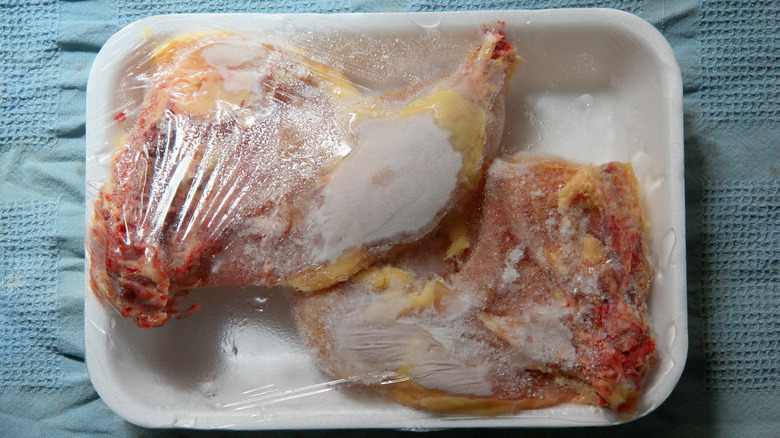What It Means When Frozen Chicken Bones Get Darker
Freezing chicken not only extends its shelf life but also retains its nutritional value, making it a convenient option for meal planning and reducing food waste. However, one common observation that might cause concern is the darkening of chicken bones in frozen poultry meat. This phenomenon, while peculiar, has a straightforward explanation related to the freezing process, its effects on poultry, and the age of the bird.
When chicken freezes, the bone marrow, which contains pigments and fat, can seep through the porous bones, especially in young chickens. This is because younger chickens have less dense bones that are not fully calcified, making it easier for the marrow to pass through and reach the surrounding tissue during the freezing process. This color change is more pronounced in areas close to the bone and is a natural part of freezing.
Another factor contributing to the darkening is the storage duration and temperature. Fluctuations in freezer temperature can exacerbate this phenomenon, as repeated thawing and refreezing can cause more marrow to migrate into the bone and surrounding meat. However, the big question is: Does this darkening indicate spoilage or a decline in the meat quality?
Food safety and signs of spoilage
Despite the initial concern it might cause, the darkening of chicken bones in frozen meat does not affect the safety or edibility of the chicken. The chicken is still as nutritious and safe to eat as it was before the bones darkened, provided it has been stored properly and has not been kept frozen beyond recommended time frames. Additionally, chicken should always be thawed in the refrigerator or using a microwave, never at room temperature, to prevent the growth of harmful bacteria. And once thawed, it should be cooked thoroughly to an internal temperature of 165 degrees Fahrenheit to kill any harmful bacteria.
However, while darker bones are not a sign of spoilage, there are other indicators that should not be ignored. To ensure the safety of frozen chicken, look out for signs of spoilage such as a foul odor, slimy texture, and discoloration of the meat itself. These are clear indicators that the chicken has gone bad and should not be consumed. It's also crucial to observe the best before dates and to use or freeze fresh chicken promptly after purchase.
In essence, while the darkening of chicken bones in frozen meat might seem alarming, it's a harmless occurrence that doesn't compromise the safety of the chicken. By knowing what signs of spoilage to look for and practicing safe storage methods, you can confidently include frozen chicken in your meal plans without worry.

